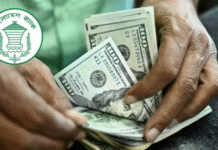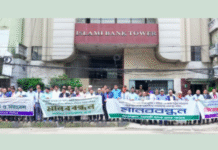US secretary of state Henry Kissinger had dismissed Bangladesh as a “perpetual economic basket case” almost immediately after it was born. Spite, more than anything else, may have influenced the remark as the birth of Bangladesh was “raw chilly to wounds” sustained by the US in Vietnam.
Washington could only blame itself for supporting Yayha Khan’s blood-thirsty military junta in one of the worst genocides in recent history — but unlike China that quickly got over the same hangover for Pakistan and developed relations with Bangladesh, regardless of the party in power, the US could never come to terms with the Awami League that had spearheaded the fight for the country’s independence from Pakistan.
But Bangladesh has proved Kissinger wrong. In the last five years, its GDP has grown on average of 6.3 percent a year in the midst of one of the worst global downturns in recent times. It has achieved its 2015 UN Millennium Development Goals two years in advance.
In 2013, it had brought the number of poor to less than 30 percent of its population — a target set for 2015 by the UN. In most indices of human development, especially gender-related, Bangladesh has surged miles (in some cases, yards) ahead of India and other south Asian nations.
When India is unable to manage its spiralling current account deficit, Bangladesh sits on a comfortable current account surplus of $2.57 billion for the first time in its independent history.
Its revenue collection has risen threefold over the last five years and its tax-GDP ratio has increased to 13.5 percent from 10.8 percent during the period. The Awami League, which has been in power since January 2009, has good reasons to take credit for its management of the economy.
War Chest Swells with Pride
The foreign currency reserves at the Bangladesh Bank have crossed the $16-billion mark, enough to meet import costs of five months. Export earnings have soared to over $27 billion from $10 billion in the last five years. Bangladesh also witnessed a buoyant remittance flow with the amount nearly touching $15 billion.
With its expatriates largely from the working class, the tendency is to send a lot of money back home to buy assets for the future as they plan to return home rather than settle overseas. So, regardless of the political turmoil back home, most Bangladeshis abroad believe in a future for south Asia’s youngest nation.
For the first time, foreign direct investment has topped the $1-billion mark. It was $1.3 billion in the 2012-13 fiscal year. Foreign aid flow has also increased substantially.
However, the agriculture sector has witnessed a decline and investment in the private sector has fallen too, as the State of Economy report published by the Planning Commission in September 2013 indicates. In fiscal year 2005-06, the agriculture sector grew 4.9 percent. But that came down to 2.2 percent in the last fiscal year primarily because fresh acreage could not be added to agriculture due to lack of irrigation and other infrastructure.
Source: UNBConnect










